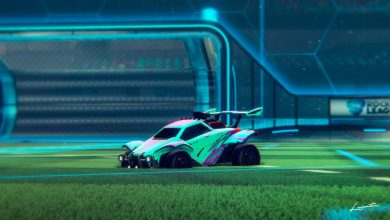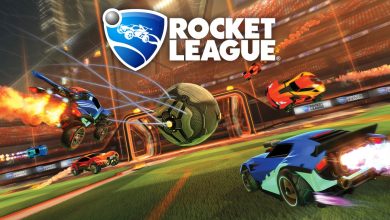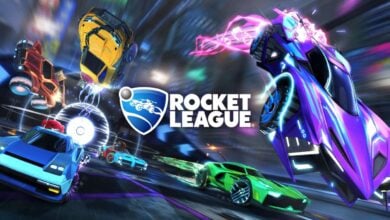With myriad alterations available, we have covered the best Rocket League settings after experiencing the gameplay, which even covers the minute details. Using this, you will stand out as a player in the competitive world of Rocket League. While presets are available on Liquipedia used by Pros who participate in the Rocket League Championship Series (RLCS), we recommend you follow our guide.
- Camera Settings: Optimize gameplay quality with camera presets, field of View, camera shake, stiffness, swivel speed, and angle settings.
- Control Settings: Fine-tune your steering, aerial sensitivity, dead zones, ball camera mode, and vibration for improved in-game performance.
- Key Binds: Mastering key binds is essential for player progress. Follow recommended controls for long-term performance.
- Video Settings: Enhance visual quality in three subcategories – window, essential, and advanced settings. Adjust resolution, FOP, render quality, VSync, and Texture details.
- Audio Settings: Customize gameplay and background music to your preferences.
Why Trust Us: Daniyal Sultan Malik has spent 30+ hours on Rocket League, making him highly trustworthy!
All Settings Options In Rocket League
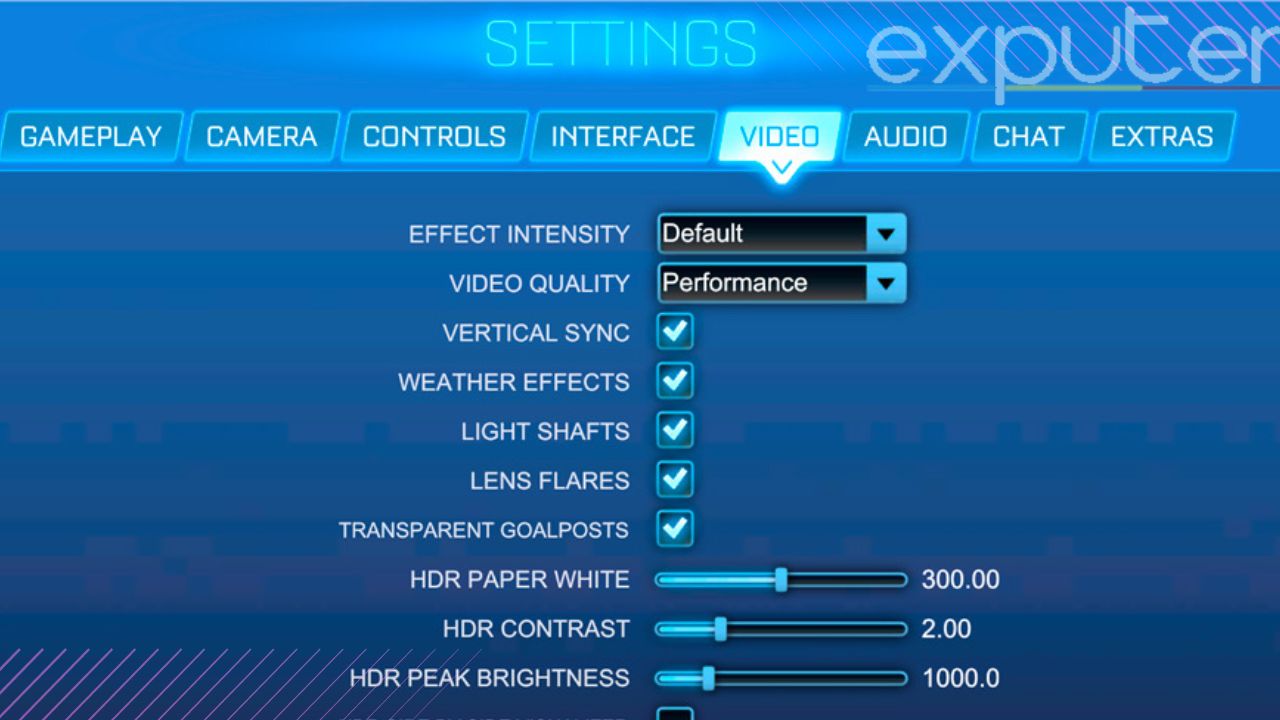
The settings of the game are divided into the following sections, which include countless features:
- Camera Settings.
- Control Settings.
- Binds.
- Video Settings.
- Audio Settings.
You must focus on these sections to get the best Rocket League settings.
Camera Settings
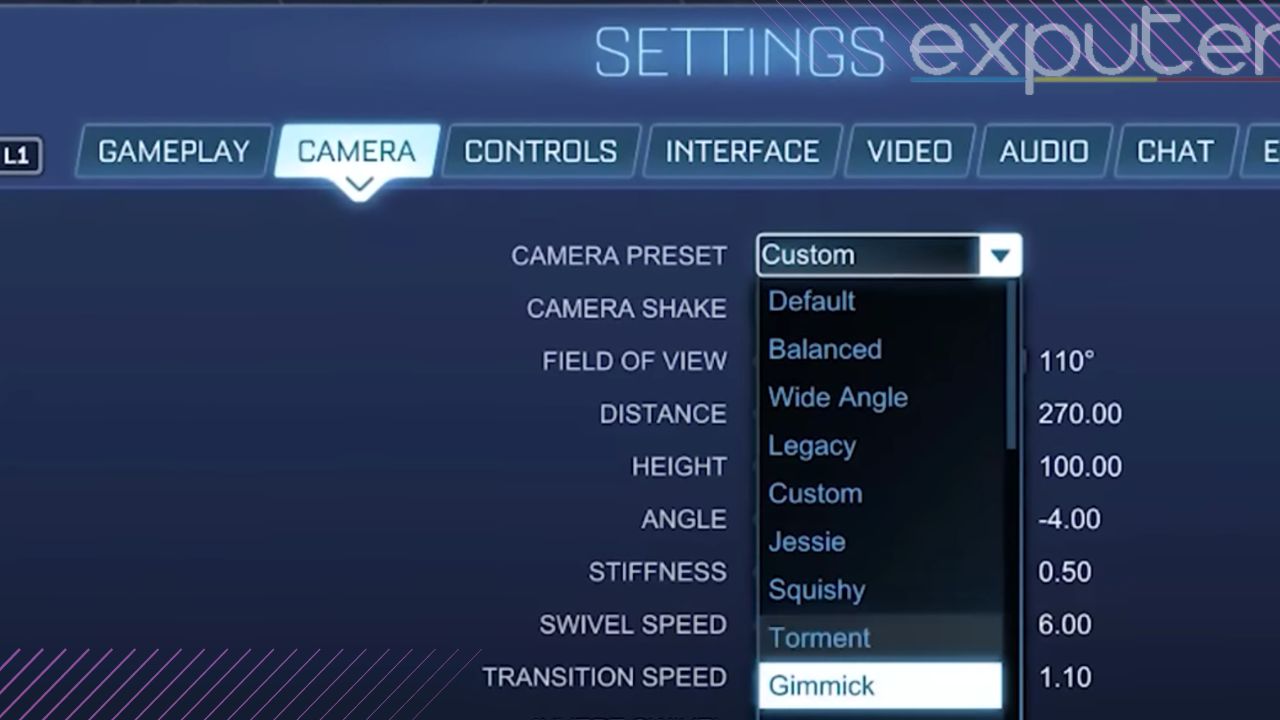
| Camera Preset | Custom |
| Camera Shake | Off |
| Field of View (FOV) | 110 |
| Camera Distance | 270 |
| Height | 100 |
| Angle | -4 |
| Stiffness | 0.5 |
| Swivel Speed | 7 |
| Transition Speed | 1.2 |
| Invert Swivel | ON |
Control Settings
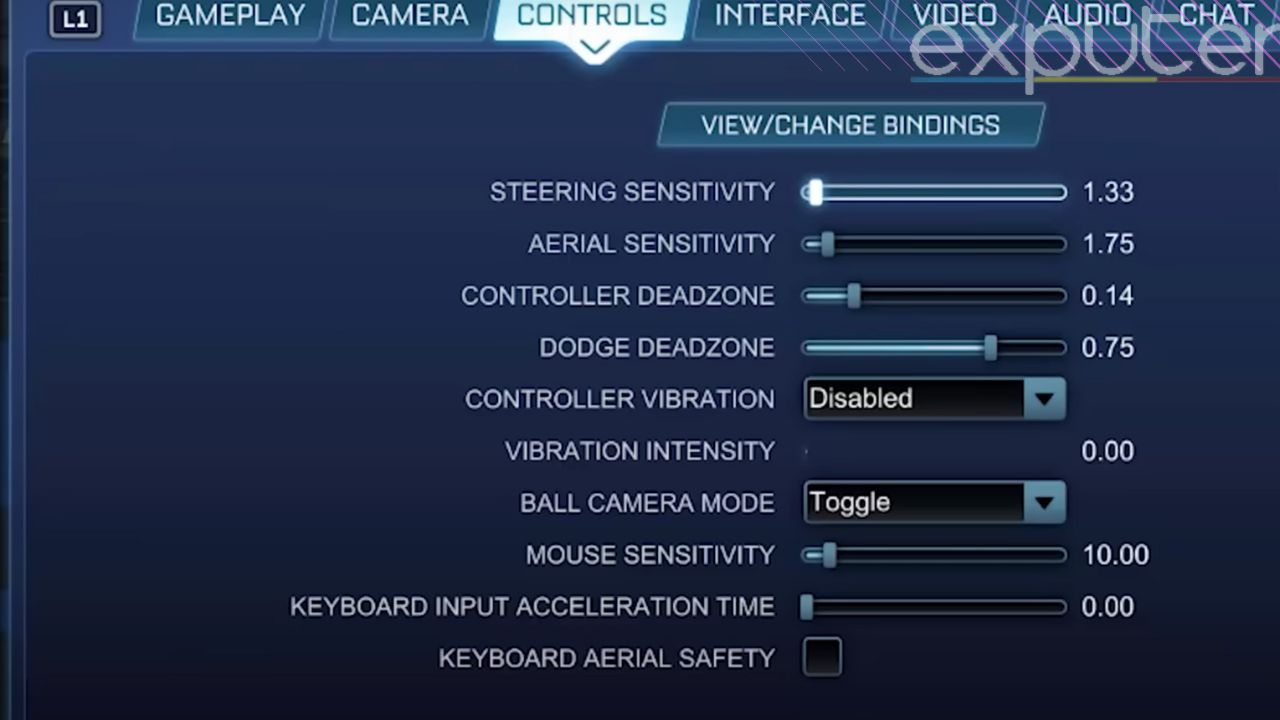
| Steering And Aerial Sensitivity | (steering 1.2 and Aerial 1.4) |
| Controller Deadzone | 0.04 – 0.10 |
| Dodge Deadzone | 0.6 |
| Controller Vibration | Disabled |
| Vibration Intensity | 1 |
| Ball Camera Mode | Toggle |
| Other Settings |
|
Binds
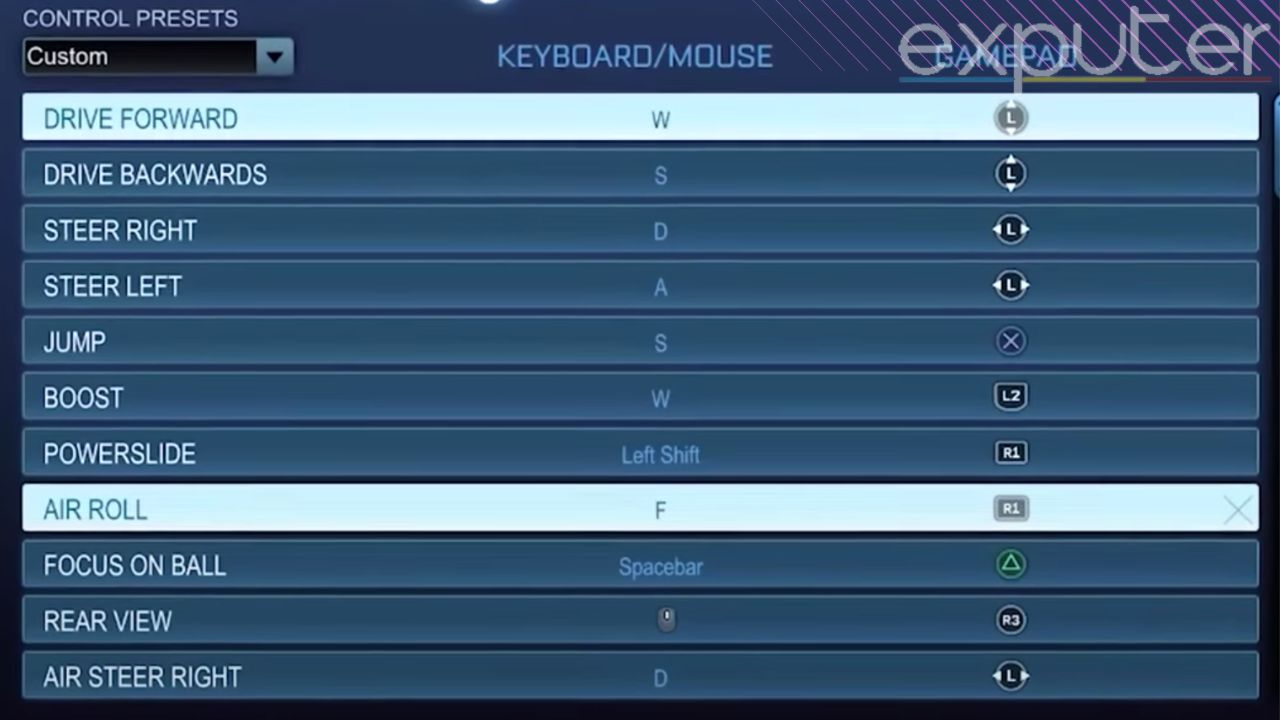
| Drive Forward/Backward | L3 |
| Jump | X |
| Boost | L2 |
| Powerslide/Air Roll | R1 |
| Rear View | R3 |
| Air Roll Left/Right | □ (square button) |
| Camera Swirl | R3 |
| Other Keybinds |
|
Interface Settings
| Name Scale | 200 |
| Colour Blind | OFF |
| Display Scale | 99% |
| Force Default Team Colours | ON |
| Team Coloured Boost Meter | ON |
| Match Notifications | Time Update Only |
| Ball Cam Indicator | OFF |
| Ball Arrow | ON |
| Performance Graphs | None |
You can adjust the interface settings according to your usage.
Other Settings
Set the following settings according to your suitability, or you can also follow them as we have done.
- Team- Coloured Boost Meter – ON
- Notifications During Gameplay – OFF
- Force Default Team Colours – OFF
- Nameplate Scale – 180 %
- Nameplate Mode – Default
- Convert Platform Friends – ON
- Connection Quality Indicators – OFF
- Interface Scale – 93 %
- Metric – OFF
Video Settings

Video settings determine the appearance of the game on the screen and how quickly it runs. They also change factors like reaction time and input delay, which consequently affect scoring and conceding in the game. Ultimately, video settings affect performance, which is the most important parameter in the game.
Window Settings
| Resolution | Set it to 1920×1080 or appropriate to the resolution of your monitor |
| Display Mode | Full Screen |
| VSync | Off |
These settings mainly include resolution and display split.
Advanced Settings
| Texture Details | High Quality |
| World Details | Performance |
| Particle Details | Performance |
| Effect intensity | Low |
| High Quality Shaders | ON |
| Ambient Occlusion | OFF |
| Depth Of Field | OFF |
| Bloom | ON |
| Light Shaft | OFF |
| Lens Flare | OFF |
| Dynamic Shadows | OFF |
| Motion Blur | OFF |
| Weather Effects | OFF |
| Transparent Goal | ON |
Audio Settings
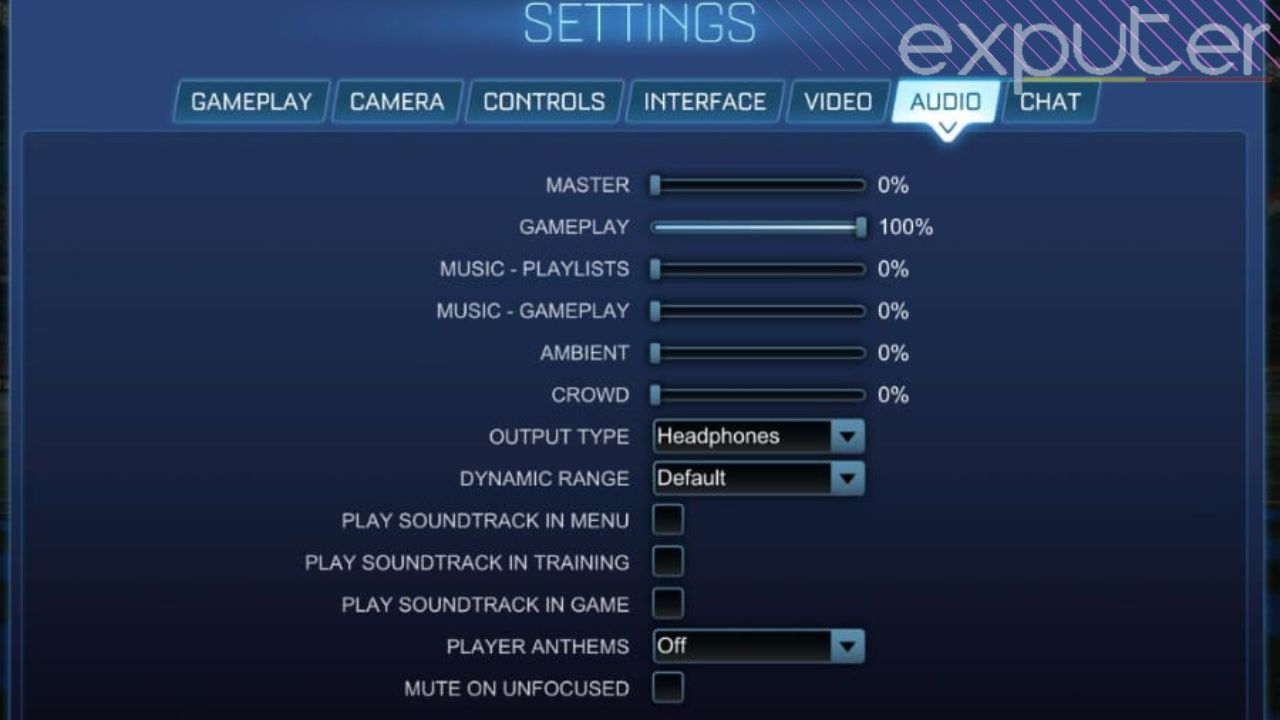
You should choose Audio settings according to your comfort, except for the following settings
- Music Gameplay – OFF
- Music Playlists – OFF
- Ambient – Off
- Crowd – Off
Next:
- NFS Unbound Best Settings
- Best Forza Horizon Settings For FPS And Performance
- Best Valorant Sensitivity Settings
Thanks! Do share your feedback with us. ⚡
How can we make this post better? Your help would be appreciated. ✍
Thanks

